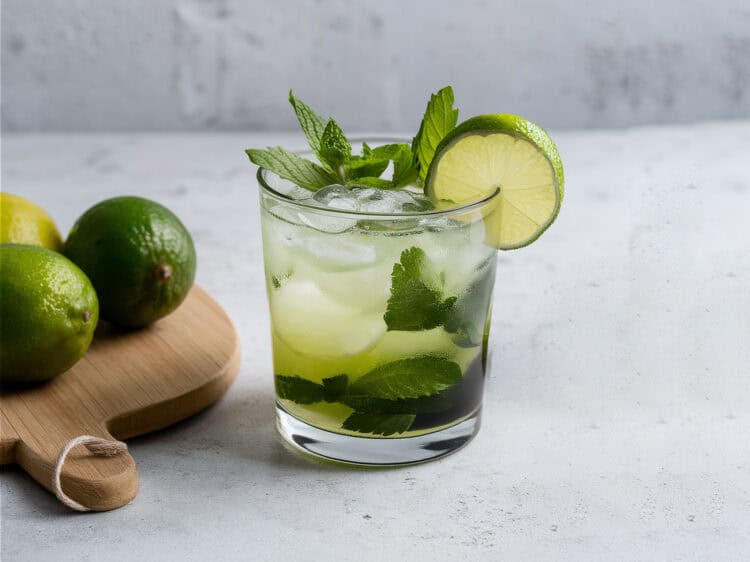How to Balance Sweet and Sour Flavors in Cocktails
If you enjoy coming up with your own cocktail recipes, you know it’s important to understand how flavors work together. Let’s take a look at how to balance sweet and sour flavors in cocktail recipes that feature both.

The best cocktail recipes – the ones that stand the test of time and stick around – achieve the perfect balance of flavors. That’s what makes a classic drink.
So one of the fundamentals of mixology is finding the right harmony between sweet and sour flavors. Learning how is easy. There’s some science to it, some practical tips, and a few key things to remember.
Understanding Sweet and Sour
There are a few things to understand about these two wonderful flavor groups.
Sweetness
Sweetness is an important element in cocktails as it helps to balance out other strong flavors and adds depth to the overall taste. The level of sweetness can be adjusted based on personal preference.
But you want to avoid overpowering the drink with sweetness, because then you can’t taste the other flavors. Sweetness in cocktails comes from all sorts of things, like:
- Simple syrup
- Honey
- Agave nectar
- Maple syrup
- Fruit juices like pineapple, apple, orange, or cranberry
- Sweet wines or liqueurs
- Soda or tonic water
- Fruits like strawberries, cherries, peaches, or pears
- Flavored syrups like vanilla, caramel, or hazelnut
- Sugar cubes or granulated sugar
- Coconut milk or cream
- Sweetened condensed milk
- Chocolate syrup or cocoa powder
Sourness
Sourness provides a refreshing, tangy element to cocktails. It usually comes from citrus fruits, but it can come from any of the following.
- Lemon juice
- Lime juice
- Grapefruit juice
- Orange juice (more sweet than sour, but can still give a tangy flavor)
- Certain types of alcohol like vermouth or certain types of wine
- Sour mix (a combination of lemon or lime juice and simple syrup)
- Bitters (though they’re more bitter than sour, they can still give a tangy flavor)
- Certain fruits like cranberries or pomegranates
- Yogurt or kefir (for creamy cocktails with a tang)
- Sour beer (for beer cocktails)
Sourness adds brightness and complexity to a cocktail, cutting through the sweetness and balancing the overall flavor profile.
Key Ingredients for Balancing Sweet and Sour
Citrus Fruits
Citrus fruits like lemons, limes, and oranges are the backbone of many cocktails because they provide acidity and sourness.
Freshly squeezed citrus juice is better at this than bottled. It has brighter, sharper flavors. Experimenting with different citrus fruits can help you find the perfect balance for each cocktail.
Simple Syrup
Simple syrup is a common sweetener used in cocktails. It is made by dissolving equal parts of sugar and water (or twice as much sugar as water for “rich” simple syrup).
The syrup adds sweetness without altering the overall flavor profile of the drink. Adjusting the amount of simple syrup is crucial to finding the balance between sweet and sour, ensuring that one flavor doesn’t overpower the other.
Liqueurs
Most liqueurs impart enough sweetness that you may not need any other sweet ingredients in your cocktail. These liqueurs include ameretto, Irish cream, Kahlua, Chambord, St. Germain, Frangelico, Cointreau, creme de cassis, fruit flavored liqueurs, and many more.
Even a citrus flavored liqueur, like Grand Marnier or triple sec, is much sweeter than it is tangy, and so it’ll be considered a sweetening ingredient in cocktails.
Tips for Balancing Sweet and Sour
Start with a Base Ratio
A good starting point for balancing sweet and sour in cocktails is to use a 2:1 ratio of sweet to sour ingredients. For example, if you’re using 1 ounce of simple syrup, pair it with 0.5 ounces of freshly squeezed citrus juice.
This ratio can be adjusted based on personal taste preferences and the specific cocktail being made.
Use Fresh Ingredients
Opt for fresh juices and high-quality ingredients. Freshly squeezed citrus juices (lemon, lime, orange) provide a natural sourness. And using fresh fruits or homemade syrups for sweetness can enhance the overall taste.
Understand Sourness Levels
Different citrus fruits have varying levels of acidity. For example, lemon juice is more tart than orange juice. Adjust the amount of citrus juice in the cocktail based on its sourness level and the desired taste.
Consider Using Bitters
Bitters can help balance the sweetness and sourness in a cocktail by adding complexity and depth of flavor. Just a few dashes can make a difference.
Apply the Rule of Thirds
A common guideline is to use one part sour, two parts sweet, and three parts base spirit. This is a good starting point for many cocktails and can be adjusted to suit your taste.
Remember Texture
The texture of a cocktail can impact the perception of sweetness and sourness. A frothy or creamy texture may mellow the sharpness of sour flavors.
Balance with Other Flavors
Consider other flavor elements like bitter, herbal, or fruity notes to add complexity and counterbalance the sweet and sour components.
Taste as You Go
The key to finding the perfect balance is tasting the cocktail as you’re making it. Start by adding small amounts of sweet and sour ingredients, then gradually increase or decrease based on your taste buds’ feedback.
Remember you can always add more sweetness or sourness, but you can’t remove it once the drink is made.
Use Measuring Tools
Consistency is crucial when balancing sweet and sour in cocktails. Using a jigger or measuring tools ensures that you’re adding precise amounts of ingredients, making it easier to replicate the flavor profile in future batches.
This method also helps maintain the correct balance of flavors throughout the drink.
Consider the Overall Flavor Profile
Balancing sweet and sour is not just about achieving a 50/50 ratio. It’s essential to consider the other ingredients in the cocktail and how they contribute to the overall flavor profile.
For example, if you’re using a strongly flavored spirit, you may need to adjust the sweet and sour elements accordingly to ensure they are not overshadowed.
Experiment with Garnishes
Garnishes can play a crucial role in balancing sweet and sour flavors. A citrus twist, a sprig of fresh herbs, or even a pinch of salt can enhance the taste of the drink and help bring out the desired balance.
Don’t be afraid to get creative with your garnishes and see how they contribute to the overall flavor experience.
Last Updated:












